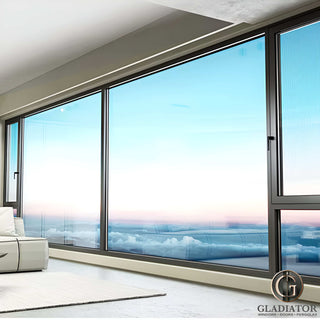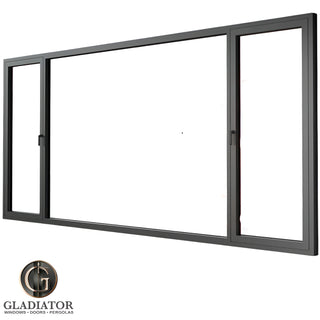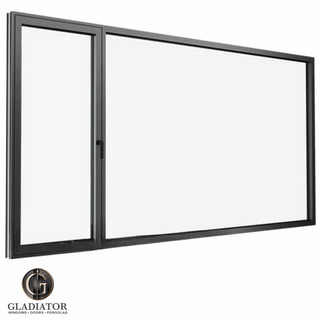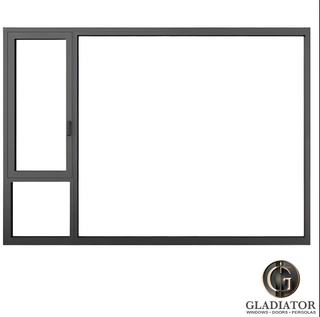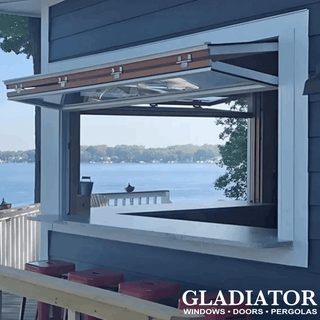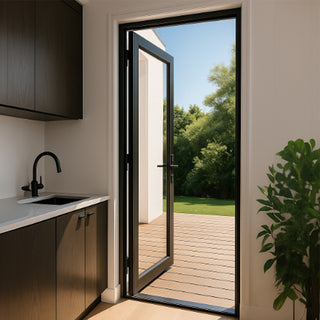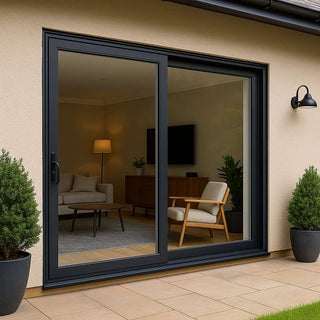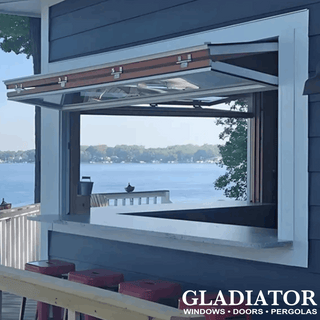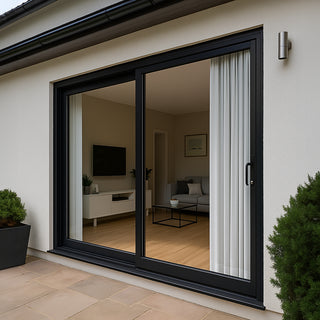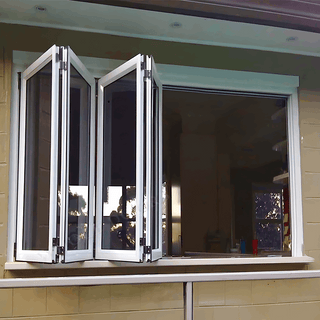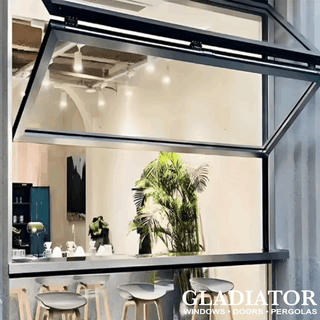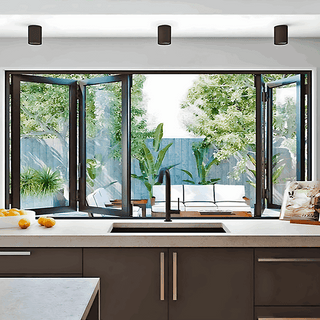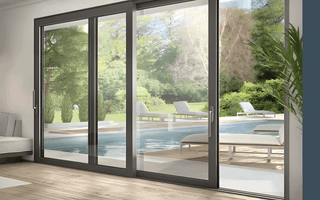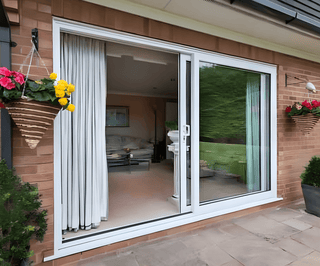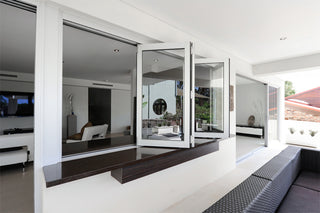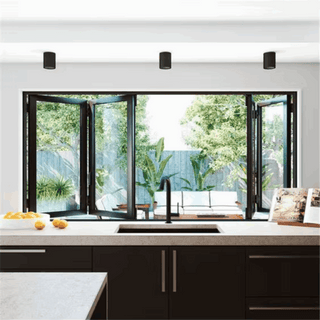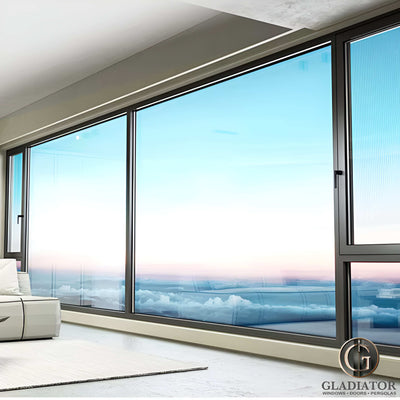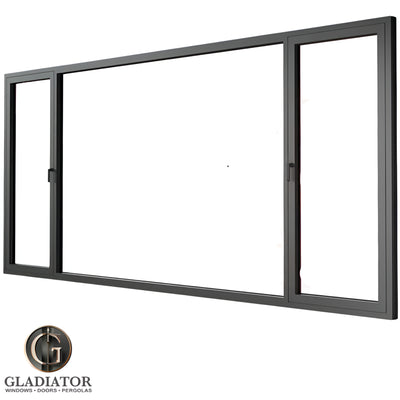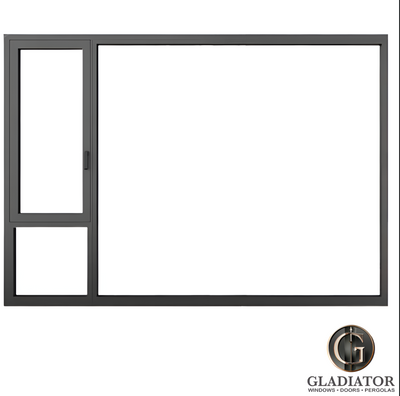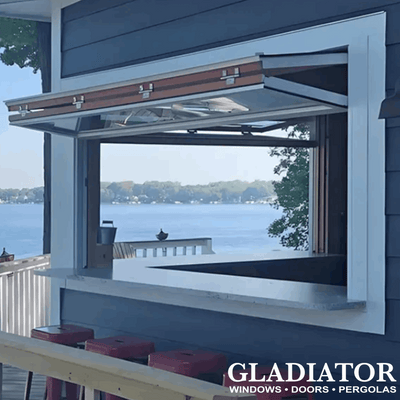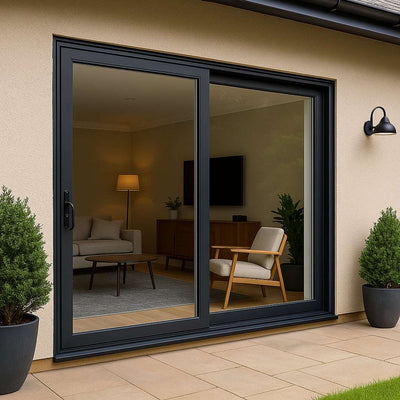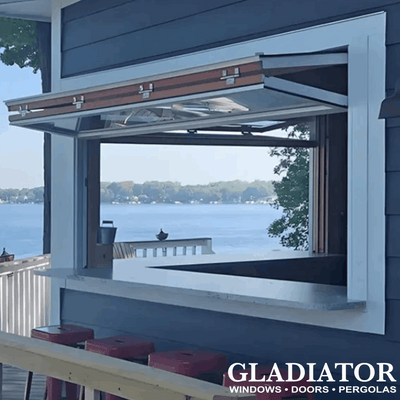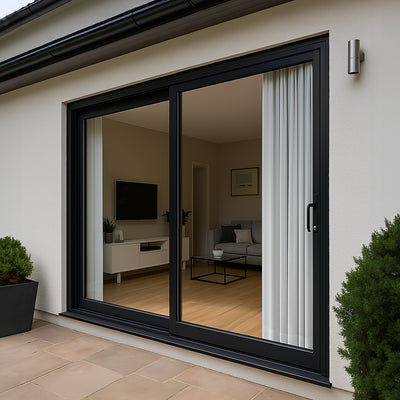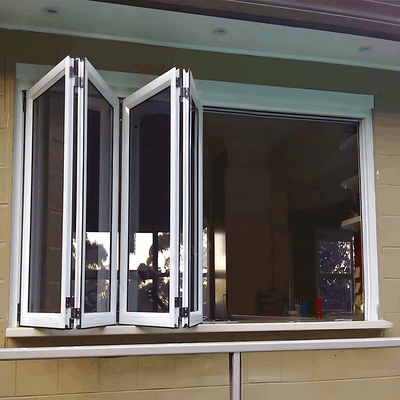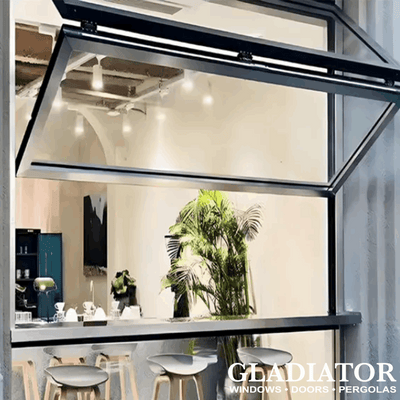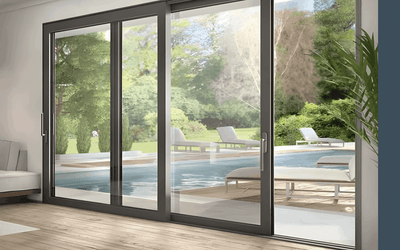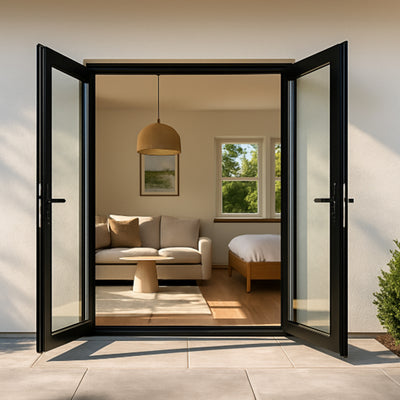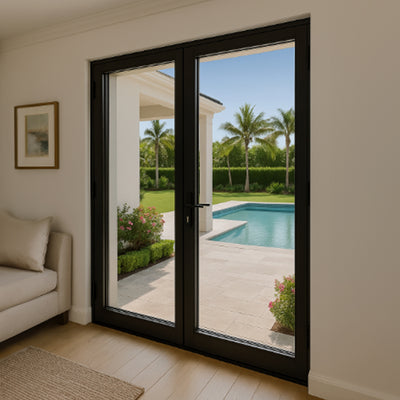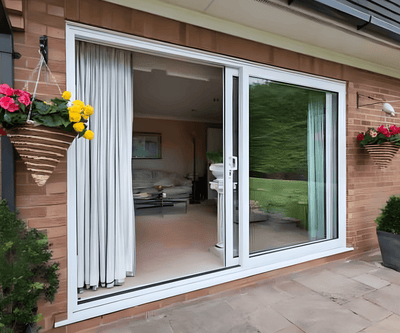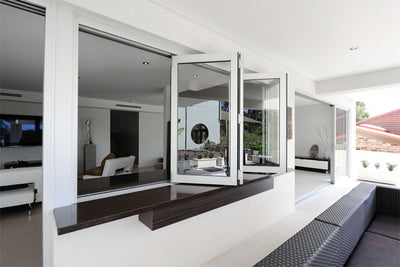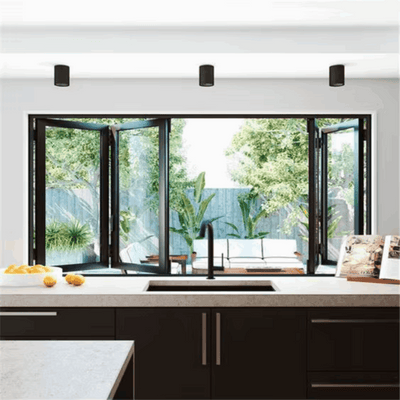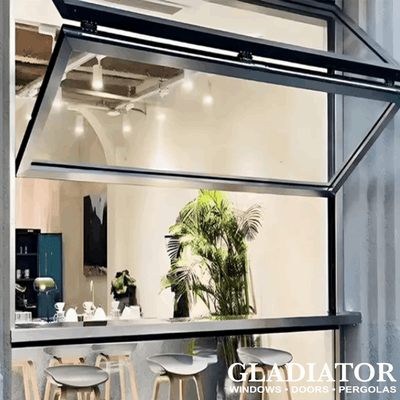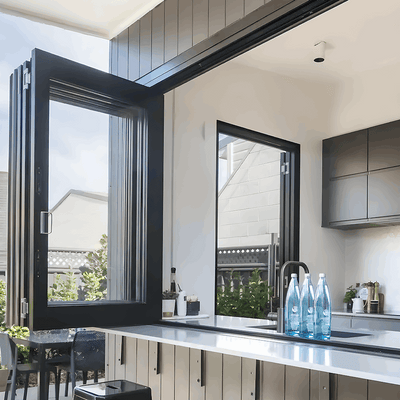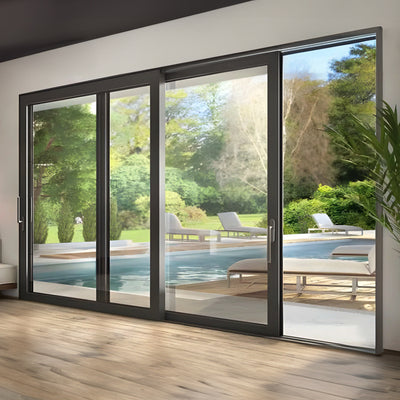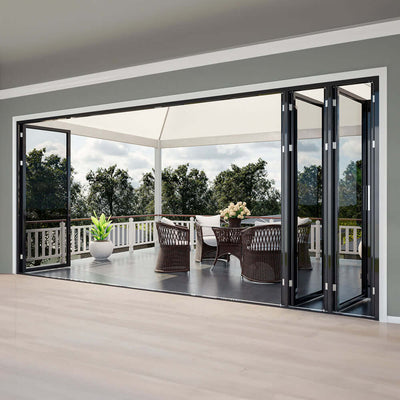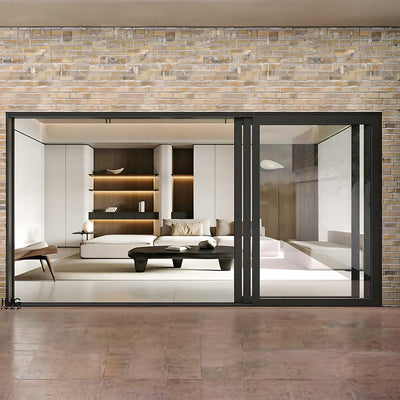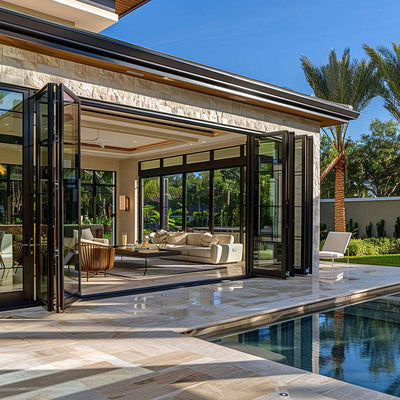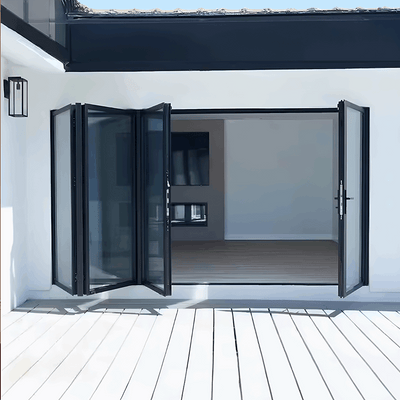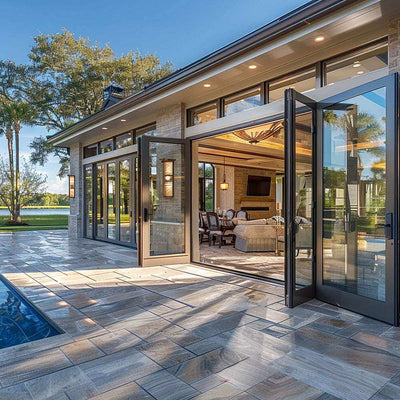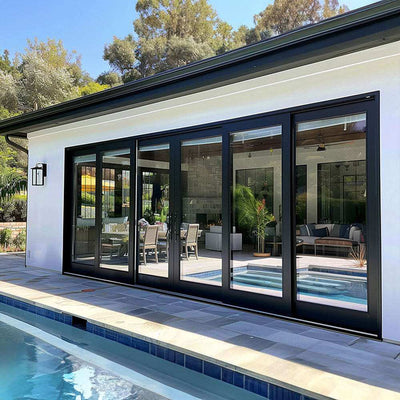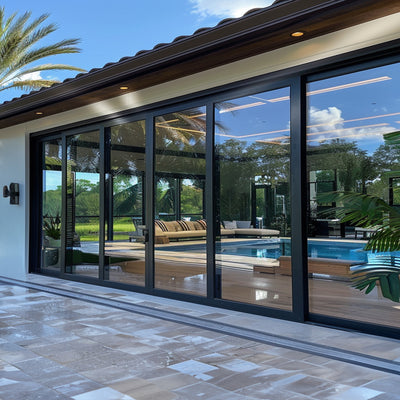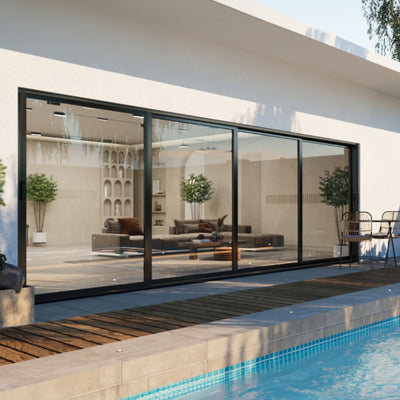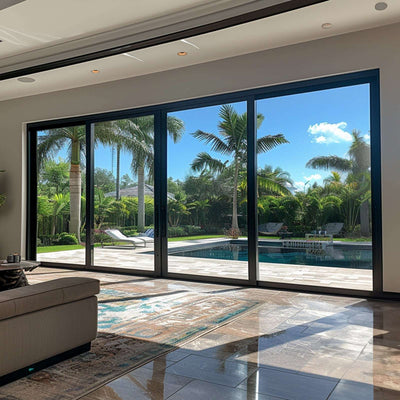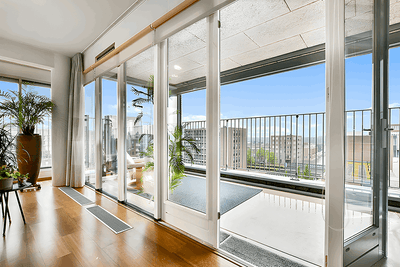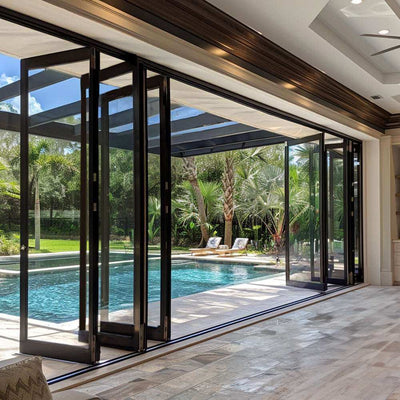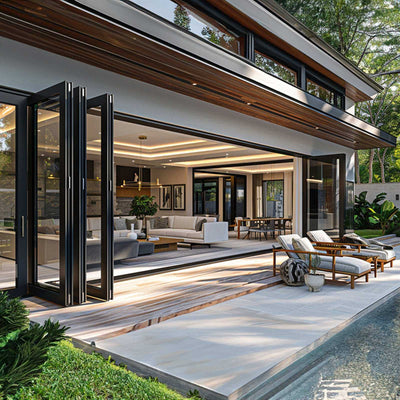Elevate Your Entryway: Choosing the Right Door Material
Your front door is the first impression of your home. It's essential for security, energy efficiency, and curb appeal. Finding the best material for exterior doors means balancing budget, maintenance, and style. This list explores six top contenders—fiberglass, solid wood, steel, aluminum, composite, and glass—to help you select the perfect door for your needs in 2025. This guide helps you choose the right material to upgrade your home and enhance its value.
1. Fiberglass
When searching for the best material for exterior doors, fiberglass stands out as a top contender for its exceptional combination of durability, energy efficiency, and design flexibility. Fiberglass exterior doors are crafted from a composite material of glass fibers and resin, molded into a robust and weather-resistant structure. They offer the aesthetic appeal of wood without the inherent drawbacks, making them a popular choice for homeowners, contractors, and builders alike. These doors are designed to withstand harsh weather conditions, resist rot and insect damage, and provide excellent insulation, ultimately contributing to a more comfortable and energy-efficient home.

The infographic below presents a decision tree to help you determine if a fiberglass door is the right choice for your exterior needs. It visualizes the key decision-making process by considering factors such as budget, desired maintenance level, and aesthetic preferences.
Fiberglass doors often feature a foam core insulation, further enhancing their energy efficiency and providing a higher R-value compared to traditional wood or steel doors. They are available in various styles, designs, and finishes, often including options for decorative glass panels and realistic wood grain textures. Leading manufacturers like Therma-Tru (who pioneered fiberglass doors in 1983), Masonite, Jeld-Wen, Pella, and ProVia offer a wide selection of high-quality fiberglass entry door systems. For example, Therma-Tru's Classic-Craft premium fiberglass doors are known for their exquisite craftsmanship and attention to detail, while Jeld-Wen's Architectural Fiberglass door line offers a range of contemporary and traditional designs.
The decision tree guides you through considering your budget (higher initial cost), desired maintenance (low), and the importance of energy efficiency and durability. If these factors align with your needs, fiberglass is likely the ideal choice. The infographic highlights the inherent advantages of fiberglass doors, confirming their place as a premium, long-lasting exterior door solution.
Pros:
- Excellent insulation properties (high R-value): Reduces energy loss and lowers heating and cooling costs.
- Highly resistant to weather damage: Withstands extreme temperatures, humidity, and rain without warping, rotting, or rusting.
- Low maintenance requirements: Doesn't require painting or staining as frequently as wood doors.
- Long lifespan (typically 15-30+ years): A durable and long-lasting investment.
- Can be painted or stained: Offers design flexibility to match any home style.
- Resistant to dents and scratches: Maintains its appearance even with everyday wear and tear.
Cons:
- Higher initial cost than steel or wood options: Represents a larger upfront investment.
- Can fade over time with prolonged sun exposure: Requires UV-protective finishes for color retention.
- May crack under extreme impact: While durable, it's not impervious to significant force.
- Heavier than some alternatives: May require more robust framing.
- Not easily repaired if damaged: Significant damage may necessitate door replacement.
Tips for Choosing and Maintaining Fiberglass Doors:
- Choose a model with a high-density foam core for maximum insulation.
- Select a door with deep embossing for a more realistic wood appearance.
- Apply UV-protective finishes to prevent color fading.
- Look for ENERGY STAR certified options for the best thermal performance.
- Consider prefinished options to save on installation time and costs.
When and Why to Use Fiberglass Doors:
Fiberglass doors are an excellent choice for homeowners, builders, and contractors seeking a durable, energy-efficient, and low-maintenance exterior door solution. They are ideal for climates with extreme weather conditions and for homeowners prioritizing long-term value and performance. If you're willing to invest in a high-quality door that will last for decades, fiberglass is the best material for exterior doors for your needs.
2. Solid Wood
Solid wood exterior doors are the quintessential choice for homeowners seeking a timeless and elegant entryway. Representing the traditional approach to door construction, they offer unmatched natural beauty, warmth, and classic appeal that synthetic materials often struggle to replicate. Crafted from various hardwoods like oak, mahogany, walnut, or cherry, each solid wood door boasts distinctive grain patterns and rich character, making it a unique statement piece for any home. These doors are substantial in weight and thickness, conveying a sense of quality and security. Learn more about Solid Wood They can be intricately carved, feature raised panels, and are often available with completely custom designs and specifications, allowing for a high degree of personalization to match your architectural style.
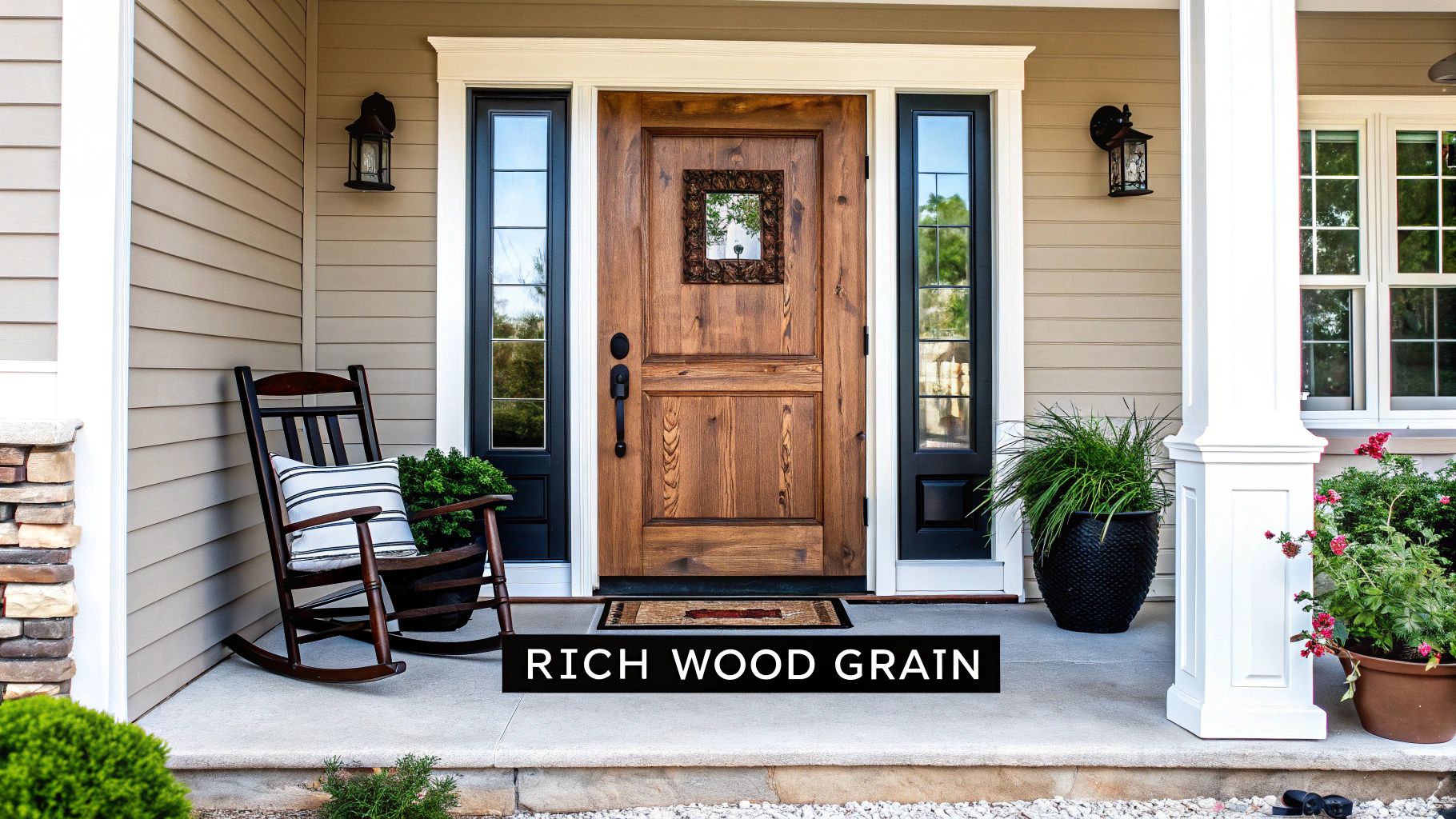
Solid wood doors earn their place on the "best material for exterior doors" list because of their enduring aesthetic and potential to significantly enhance curb appeal. While modern alternatives offer certain advantages in terms of maintenance and energy efficiency, the natural warmth and character of wood remain highly desirable, often adding considerable value to a home. Examples of manufacturers producing high-quality solid wood doors include Simpson Door Company's Nantucket Collection, Pella's Reserve Traditional wood entry doors, Rogue Valley Door's handcrafted hardwood doors, and TruStile's solid wood exterior door collections. These companies showcase the versatility and beauty achievable with this material.
Pros:
- Unmatched natural beauty and warmth: Solid wood offers an aesthetic quality that is difficult to replicate.
- Excellent sound insulation: The density of wood provides superior sound dampening compared to lighter materials.
- Can be repaired, refinished, and customized: Damage can often be repaired, and the door can be refinished multiple times to update its look or maintain its protective coating.
- Adds significant curb appeal and potential home value: A beautiful solid wood door can be a major selling point for a home.
- Traditional, timeless aesthetic: Solid wood doors never go out of style.
- Environmentally sustainable when sourced responsibly: Choosing wood from sustainably managed forests makes this a responsible choice.
Cons:
- Susceptible to warping, swelling, and shrinking with moisture/temperature changes: Wood reacts to humidity and temperature fluctuations, requiring proper sealing and maintenance.
- Requires regular maintenance (refinishing every 1-3 years): To protect the wood from the elements, regular refinishing is essential.
- Less energy efficient than alternatives without added insulation: Solid wood doors can be less energy-efficient than insulated steel or fiberglass doors.
- Vulnerable to insect damage and rot: Without proper treatment and maintenance, wood can be susceptible to pests and rot.
- Generally more expensive than steel or fiberglass: Solid wood is a premium material and commands a higher price.
- Environmentally impactful if not sourced responsibly: It's crucial to choose wood from sustainable sources.
Tips for Choosing and Maintaining Solid Wood Doors:
- Install under a covered porch or entryway: Minimizing direct exposure to the elements will significantly extend the lifespan of your door.
- Apply UV-resistant finishes: Protect the wood from sun damage by using high-quality finishes.
- Use multi-point locking systems: Enhance security and weathertightness with a robust locking system.
- Choose quarter-sawn lumber for improved stability: Quarter-sawn wood is less prone to warping and twisting.
- Select wood species appropriate for your climate: For example, mahogany is a good choice for humid climates.
- Maintain a regular refinishing schedule: This is key to preserving the beauty and longevity of your solid wood door.
3. Steel
When considering the best material for exterior doors, steel stands out as a top contender for its impressive combination of security, durability, and affordability. Steel exterior doors are constructed with a steel skin over an insulating foam core. This design provides reliable protection against forced entry and the elements while maintaining good energy efficiency. This strength-to-cost ratio makes steel doors one of the most common choices for residential and commercial entryways across a wide range of budgets. They are a practical choice for homeowners, condo owners, contractors, builders, and developers alike.
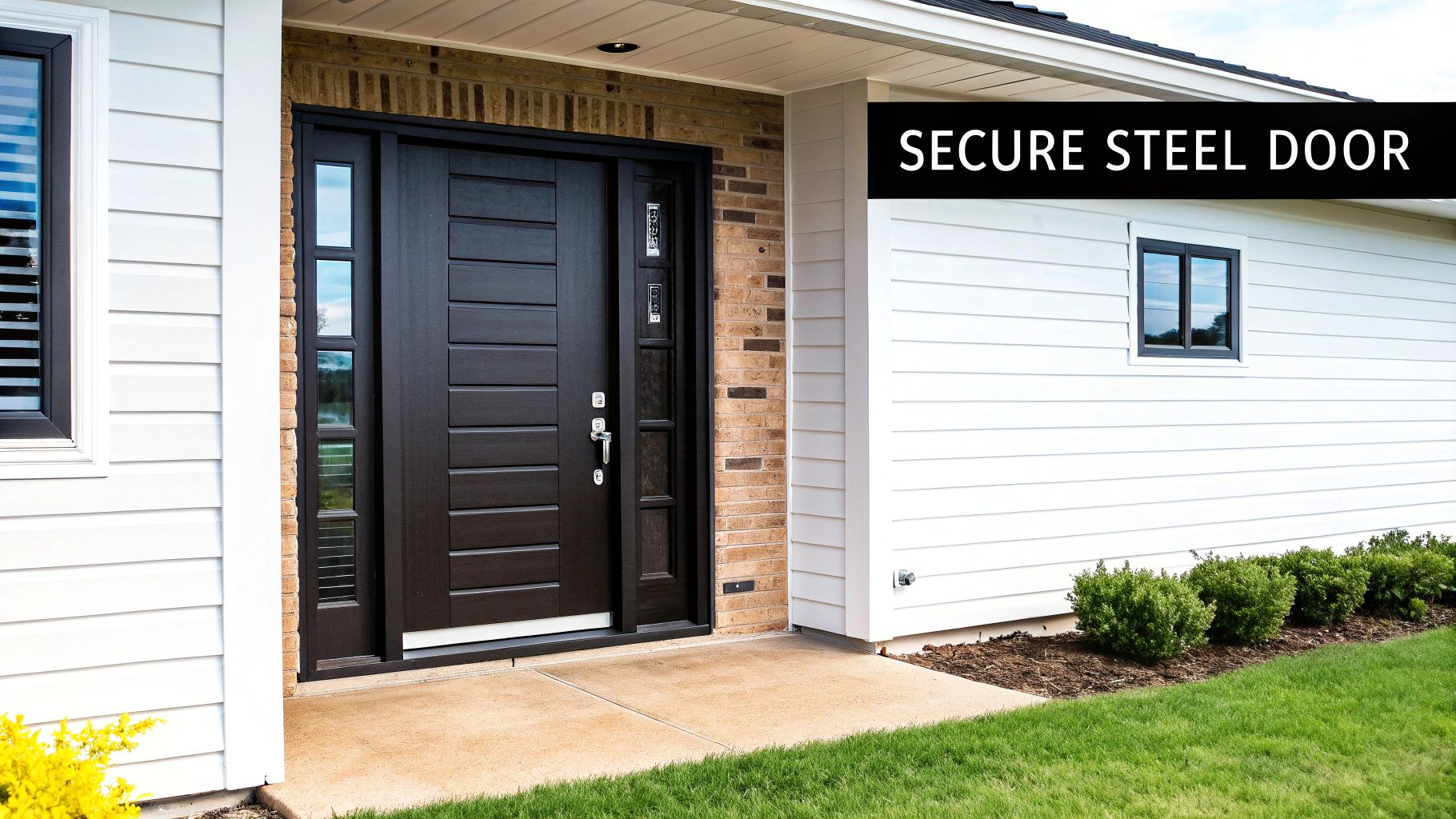
Steel doors are available in various thicknesses, typically ranging from 24-gauge (thicker and more secure) to 28-gauge (thinner and more budget-friendly). The foam core insulation between the steel skins contributes to the door's energy efficiency. Additional features like magnetic weatherstripping further enhance insulation and help reduce energy costs. For added security, many steel doors include reinforced lock blocks, making them significantly more resistant to forced entry. Aesthetically, steel doors are available in smooth or embossed wood-grain textures, offering some design flexibility to complement various architectural styles. They can also be painted in any color, allowing for complete customization to match your home's exterior. Popular manufacturers like Jeld-Wen, Masonite, Pella, ProVia, and Therma-Tru offer a wide selection of steel entry door systems, demonstrating the widespread adoption and trust in this material.
Pros:
- Excellent security and forced entry resistance: Steel's inherent strength makes it a formidable barrier against intruders.
- Most affordable option among quality exterior door materials: Steel offers excellent value for its price point.
- Durable and long-lasting in most environments: Steel doors can withstand daily wear and tear, making them a practical choice for busy households and commercial properties.
- Low maintenance requirements: Steel doors require minimal upkeep, saving you time and effort.
- Good insulation properties with foam core: The insulated core helps regulate indoor temperatures and reduce energy bills.
- Fire resistant: Steel's natural fire resistance adds an important layer of safety to your home.
- Can be painted in any color: This allows for seamless integration with your existing color scheme.
Cons:
- Susceptible to dents and scratches: While durable, steel can be dented or scratched by impacts.
- Can rust if protective finish is compromised: Proper maintenance and repainting are essential, especially in harsh climates.
- Conducts temperature (can feel hot or cold to touch): This can be mitigated with a vinyl thermal break.
- Limited design options compared to wood: While some textured options are available, steel offers less design flexibility than wood.
- Difficult to repair significant damage: Major dents or structural damage can be challenging to repair.
- Less insulating than fiberglass options: While steel doors offer good insulation, fiberglass provides superior thermal performance.
Tips for Choosing and Maintaining a Steel Door:
- Choose 24-gauge steel for maximum durability and security, especially for exterior doors facing the street.
- Select a door with a vinyl thermal break to prevent heat/cold transfer and improve energy efficiency.
- Install kick plates in high-traffic areas to prevent damage from scuffs and impacts.
- Apply rust-inhibiting paint when repainting to protect the steel from corrosion.
- Consider a polyurethane foam core for superior insulation over polystyrene.
- For coastal environments or areas with high humidity, look for galvanized or stainless steel options for enhanced rust resistance.
For homeowners in hurricane-prone areas, learn more about Steel doors engineered to withstand extreme weather conditions. Choosing the right steel door involves carefully considering your budget, security needs, and desired aesthetic. By understanding the features, benefits, and potential drawbacks, you can make an informed decision that enhances both the security and curb appeal of your home or commercial property.
4. Aluminum
Aluminum stands out as one of the best materials for exterior doors, particularly for those seeking a modern aesthetic combined with impressive durability. Its lightweight nature, coupled with inherent corrosion resistance, makes it a top choice for contemporary architecture and coastal environments. This material shines in applications where sleek design and resistance to the elements are paramount.
Aluminum exterior doors are constructed using extruded aluminum frames, a process that results in incredibly strong and precise profiles. These frames often incorporate large glass panels or inserts, creating minimalist entryways that maximize natural light transmission. Learn more about Aluminum to see how these systems can transform a space. This focus on expansive glazing makes aluminum doors ideal for homeowners, condo owners, and developers looking to create bright, open living spaces.
One of the key advantages of aluminum is its natural resistance to rust and rot. This inherent durability minimizes maintenance requirements, making it a practical choice for busy homeowners and commercial property owners alike. In harsh weather conditions, from coastal salt spray to heavy rain and snow, aluminum continues to perform exceptionally well, ensuring longevity and reducing the need for frequent repairs or replacements. This resilience is why contractors, builders, and general contractors often recommend aluminum for new construction and renovation projects, particularly in challenging climates.
Features and Benefits:
- Extruded aluminum frame construction: Provides structural integrity and precise design.
- Large glass panels/inserts: Maximizes natural light and offers contemporary aesthetics.
- Thermally broken profiles: Enhances energy efficiency by minimizing heat transfer.
- Powder-coated finish: Available in a variety of colors for design flexibility.
- Slim sightlines: Allows for maximum glass area and unobstructed views.
Pros:
- Highly resistant to corrosion and rust
- Lightweight yet structurally strong
- Minimal maintenance requirements
- Contemporary, sleek appearance
- Environmentally friendly (100% recyclable)
- Excellent longevity in coastal environments
- Can accommodate large glass areas for natural light
Cons:
- Poor natural insulator without thermal breaks
- Can conduct heat and cold without proper insulation
- Limited traditional design options
- More expensive than steel in many cases
- Susceptible to dents and scratches
- Less security than steel without additional features
Examples of Successful Implementation:
- Western Window Systems' Series 7000 pivot doors showcase the sleek, modern design achievable with aluminum.
- Andersen's Weiland aluminum sliding doors offer expansive glass areas for seamless indoor-outdoor transitions.
- LaCantina's contemporary aluminum door systems are popular for their innovative designs and high performance.
- Fleetwood's luxury aluminum entry doors represent the pinnacle of craftsmanship and elegance.
- Kawneer provides robust aluminum door systems for commercial applications.
Tips for Choosing and Maintaining Aluminum Exterior Doors:
- Thermal Breaks: Always select thermally broken aluminum profiles in cold climates to improve energy efficiency and prevent condensation.
- Finishes: Consider anodized finishes for maximum durability and scratch resistance.
- Security: Use multi-point locking systems for enhanced security.
- Glazing: Select high-performance glazing options (like Low-E glass) for better energy efficiency and UV protection.
- Weatherproofing: Install automatic door bottoms or threshold seals for improved weather resistance.
- Coastal Applications: Choose marine-grade aluminum for coastal applications to withstand harsh saltwater environments.
Aluminum’s combination of modern aesthetics, durability, and corrosion resistance justifies its place among the best materials for exterior doors. While it does have some drawbacks, like potential heat conductivity and a higher price point than steel, choosing high-quality, thermally broken aluminum doors with appropriate security features mitigates these concerns. Whether you are a homeowner embarking on a renovation, a builder constructing a new property, or a commercial property owner seeking durable and stylish entrances, aluminum offers a compelling solution for exterior door needs.
5. Composite
When searching for the best material for exterior doors, composite doors offer a compelling blend of durability, aesthetics, and environmental responsibility. They stand as a strong contender against traditional materials like wood and offer a modern solution for homeowners, contractors, and builders alike. Composite exterior doors are manufactured from a combination of engineered materials, including wood fibers, recycled plastics, and binding agents. This unique composition results in a highly durable and eco-friendly alternative to solid wood. Learn more about Composite
This manufacturing process allows composite doors to beautifully mimic the appearance of wood, offering various wood-like textures and grain patterns. However, unlike wood, they are engineered to resist many common exterior door problems, including moisture damage, warping, insect infestation, and rot. The inclusion of high-density foam insulation cores within the door structure significantly enhances their energy efficiency, contributing to lower energy bills.
Features and Benefits:
- Engineered Durability: Made from wood fibers, recycled plastics, and binding resins, these doors are built to withstand harsh weather conditions.
- Pest and Rot Resistance: Unlike wood, composite doors are impervious to insect infestations and won't rot or decay due to moisture.
- Dimensional Stability: Composite doors maintain their shape and size despite temperature and humidity fluctuations, minimizing warping or shrinking.
- Energy Efficiency: High-density foam insulation cores help regulate indoor temperatures, reducing energy consumption.
- Eco-Friendly: Many composite doors are manufactured with a high recycled content, making them a sustainable choice.
- Versatile Aesthetics: Available in a wide array of wood-like textures, grain patterns, and colors, allowing for customization to match any architectural style.
Pros and Cons:
Pros:
- Exceptional resistance to moisture, rot, and insects
- More dimensionally stable than wood
- Low maintenance requirements
- Good insulation properties
- Environmentally friendly (often contains recycled materials)
- Can be painted or stained
- More affordable than high-end wood doors
Cons:
- May not perfectly replicate the look and feel of real wood
- Can be susceptible to scratching
- Limited repair options if damaged
- May experience color fading in intense sun exposure (mitigated with UV-protective finishes)
- Generally heavier than wood doors
- Not as customizable as solid wood
Examples of Successful Implementation:
Several reputable manufacturers offer high-quality composite doors suitable for various applications, from residential entryways to commercial properties. These include:
- Jeld-Wen's Design-Pro fiberglass composite doors
- Therma-Tru's Pulse line of modern composite doors
- Masonite's VistaGrande composite entry doors
- Plastpro's Polyfiber composite door systems
Tips for Choosing and Maintaining Composite Doors:
- Recycled Content: Look for doors with a high percentage of recycled content to maximize environmental benefits.
- Security: Choose composite doors with reinforced lock blocks for enhanced security.
- Consistent Performance: Opt for composite frames along with composite door panels for optimal weather resistance and performance.
- UV Protection: Apply UV-protective finishes to prevent color fading, particularly in areas with intense sunlight.
- Enhanced Security: Consider multi-point locking systems for improved security.
- Moisture Resistance: Choose a door with a moisture-resistant composite core, particularly important for homeowners in humid climates.
When to Use Composite Doors:
Composite doors are an excellent choice for nearly any exterior door application, particularly in areas with challenging climates. They are well-suited for:
- Entry Doors: Provide a secure and aesthetically pleasing entryway.
- Patio Doors: Offer durability and energy efficiency for frequently used access points.
- Side Doors: Provide a low-maintenance and weather-resistant solution.
- Commercial Properties: Their durability and security features make them suitable for high-traffic areas.
By carefully considering the pros and cons and following the tips provided, homeowners, contractors, and builders can confidently choose composite doors as a durable, low-maintenance, and aesthetically pleasing option that adds significant value and curb appeal to any property. They truly are a strong contender in the search for the best material for exterior doors.
6. Glass
When considering the best material for exterior doors, glass offers a unique blend of aesthetics and functionality that makes it a compelling choice for modern homes and commercial spaces. Glass exterior doors transform entryways into stunning focal points, flooding interiors with natural light and blurring the lines between indoor and outdoor living. This approach works by utilizing large glass panels, often spanning the entire height and a significant width of the doorway, framed by durable materials like aluminum, steel, fiberglass, or wood.
Glass doors achieve their striking visual appeal and performance through specific features like tempered or laminated safety glass construction. This ensures durability and security. Furthermore, they are available in a wide array of options, from clear and frosted to tinted and decorative patterns, allowing for extensive customization to match any architectural style. Advanced glazing technologies, such as low-E coatings and inert gas fills between double or triple-paned glass, significantly enhance energy efficiency, mitigating potential heat loss or gain.
Pros:
- Maximizes natural light transmission: Glass doors dramatically increase the amount of natural light entering a space, creating a brighter and more welcoming environment.
- Creates visual connection between indoor/outdoor spaces: They seamlessly blend interior and exterior areas, expanding the perceived living space and enhancing the connection with nature.
- Contemporary, elegant appearance: Glass doors offer a sleek and modern aesthetic that elevates the overall design of a building.
- Available in numerous decorative options: From etched designs to stained glass, the customization possibilities are vast.
- Modern versions offer good energy efficiency with proper glazing: Double or triple glazing with low-E coatings and inert gas fills ensures optimal thermal performance.
- Relatively low maintenance (glass portions): Glass is easy to clean and maintain, requiring minimal upkeep.
- Can make spaces feel larger and more open: The transparency of glass creates an illusion of spaciousness, making even smaller rooms feel larger.
Cons:
- Less privacy without additional treatments: Clear glass offers minimal privacy; however, frosted, tinted, or patterned glass can address this concern.
- Reduced insulation compared to solid doors: While modern glazing technologies improve insulation, glass doors generally offer less insulation than solid doors.
- Higher security risk without proper glass and locking systems: It's crucial to select tempered or laminated safety glass and robust multi-point locking systems for enhanced security.
- Can be expensive, especially with high-performance glazing: High-performance glass doors with advanced features can be a significant investment.
- Requires more frequent cleaning: Fingerprints and smudges are more visible on glass, necessitating more frequent cleaning.
- Potential for breakage (though safety glass minimizes hazards): While tempered and laminated glass are designed to resist breakage, the potential for damage still exists.
Examples of Successful Implementation:
Companies like Pella (Architect Series), Andersen (Weiland sliding glass door systems), LaCantina (contemporary glass door collections), and NanaWall (folding glass door systems) showcase the innovative design and functionality achievable with glass exterior doors.
Tips for Choosing and Installing Glass Exterior Doors:
- Choose tempered or laminated glass for safety and security.
- Select double or triple glazing with low-E coatings for energy efficiency.
- Consider decorative or frosted glass for increased privacy.
- Install quality weatherstripping to prevent air and water infiltration.
- Use multi-point locking systems for improved security.
- In high-security areas, consider laminated glass with interlayers.
- Choose thermally broken frames in cold climates.
Learn more about Glass
Glass doors deserve a place on this list because they offer a unique combination of light transmission, aesthetic appeal, and connection to the outdoors. When properly specified and installed, glass doors can be a beautiful and functional addition to any home or commercial building, adding value and enhancing the overall living experience. While cost can be a factor, the long-term benefits often outweigh the initial investment. By carefully considering the pros and cons and following the tips provided, you can make an informed decision about whether a glass exterior door is the right choice for your project.
Exterior Door Material Comparison
| Material | Core Features ✨ | Durability & Insulation ★ | Price & Value 💰 | Target Audience 👥 | Unique Selling Points 🏆 |
|---|---|---|---|---|---|
| Fiberglass | Composite resin + glass fibers, foam core, wood grain options | Excellent insulation, weather resistant, low maintenance | Mid-high ($300-$5,000+) | Homeowners seeking durable, low-maintenance doors | High R-value, realistic wood look, ENERGY STAR certified |
| Solid Wood | Natural hardwoods, unique grains, customizable designs | Long lifespan (20-60+ yrs), needs regular maintenance | High ($500-$10,000+) | Traditional style lovers, premium custom projects | Rich natural beauty, refinishable, adds home value |
| Steel | Steel panels (24-28 gauge), foam core, reinforced locks | Good durability, average insulation, fire resistant | Low-mid ($150-$1,500) | Budget-conscious, security-focused buyers | Best security, lowest price, low maintenance |
| Aluminum | Extruded frames, large glass panels, powder coat finish | Corrosion resistant, lightweight, moderate insulation | Mid-high ($500-$10,000+) | Modern design, coastal environments | Sleek aesthetics, thermally broken options |
| Composite | Wood fibers + recycled plastics, high-density foam core | Moisture/insect resistant, stable, low maintenance | Mid ($300-$3,000) | Eco-conscious buyers, durable alternative | Eco-friendly, stable, affordable wood look |
| Glass | Tempered/laminated glass, double/triple glazing | Good light, moderate insulation, safety glass | Mid-high ($500-$15,000+) | Contemporary homes, natural light enthusiasts | Maximizes light, elegant, multiple glazing options |
Making the Final Decision
Choosing the best material for exterior doors can feel overwhelming with so many options available. From the durability of fiberglass and steel to the classic elegance of solid wood, and from the modern appeal of aluminum and composite to the light-filled beauty of glass, each material offers unique advantages and disadvantages. We've explored six key materials—fiberglass, solid wood, steel, aluminum, composite, and glass—highlighting their strengths and weaknesses in terms of cost, maintenance, security, and energy efficiency. The most important takeaways are to carefully consider your budget, the climate you live in, and the overall style of your home. When choosing the best material for your exterior door, it's also helpful to consider how it will complement your overall home aesthetic. Check out these Australian interior design trends to inspire you.
Mastering these considerations empowers you to make an informed decision that not only enhances your home's curb appeal but also contributes to its long-term value, security, and energy efficiency. The right exterior door is an investment in your property and your peace of mind. It's the first and last thing you and your guests interact with, making a statement about your style and setting the tone for your entire home.
Finding the perfect exterior door to complement your design vision is crucial. Gladiator Window and Doors offers a wide selection of high-quality exterior doors crafted from the best materials, ensuring durability, security, and style. Explore the Gladiator Window and Doors collection today and find the ideal door to welcome you home.

















